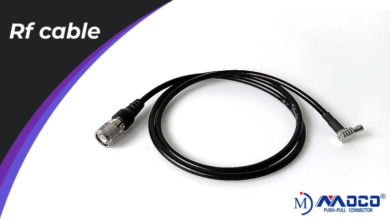Bed bugs are notorious for their ability to invade homes and cause significant discomfort. While eradicating these pests can be challenging, preventing future infestations is achievable with proactive measures. This article discusses long-term strategies to keep your home bed bug-free.
Understanding Bed Bugs
To effectively prevent bed bugs, it’s important to understand their nature. Bed bugs are small, reddish-brown insects that feed on human blood, primarily at night. Their flat bodies allow them to hide in various locations, making them difficult to detect until a significant infestation occurs. Familiarity with their behavior and hiding places can help you implement effective prevention measures.
Regular Inspections
Conducting regular inspections of your home is crucial for catching potential infestations early. Focus on your bedding and mattresses, checking seams, folds, and edges for signs of bed bugs, such as small brown spots or shed skins. In addition to bedding, inspect your furniture and upholstery, particularly crevices and under cushions. Don’t overlook baseboards and walls, where bed bugs can hide in cracks. Setting a schedule for these inspections—monthly or quarterly—can help you stay vigilant against these pests.
Use Protective Covers
Investing in high-quality bed bug-proof mattress and pillow encasements can significantly reduce the risk of infestation. These covers create a barrier that prevents bed bugs from accessing your mattress and pillows. If bed bugs do manage to get inside, you’ll quickly notice them since they can’t escape. Choose covers that are durable and specifically labeled as bedbug-proof to ensure maximum protection.
Maintain Cleanliness
Regular cleaning is an effective deterrent against bed bugs. Vacuum your home frequently, paying special attention to carpets, rugs, and upholstered furniture. Immediately dispose of the vacuum bag outside to prevent any bed bugs from escaping back into your living space. Additionally, wash sheets, pillowcases, and blankets in hot water at least once a week. High temperatures can kill any potential bed bugs or eggs. Reducing clutter also helps, as it provides fewer hiding spots for these pests. Keep items off the floor and store belongings in sealed containers when possible.
Be Cautious When Traveling
Traveling can introduce bed bugs into your home, so it’s essential to take precautions. Before unpacking in a hotel room, check the bed and furniture for signs of bed bugs. Look for dark spots on sheets and inspect the mattress seams. Keep your luggage off the floor and consider using hard-shell luggage, which is harder for bed bugs to penetrate. Upon returning home, wash all clothing immediately in hot water, even items that were not worn, to eliminate any potential hitchhikers.
Seal Entry Points
Bed bugs can enter your home through tiny cracks and openings. To prevent this, inspect your home for gaps in walls, around windows, and near doors. Use caulk or other sealants to close these openings effectively. Additionally, ensure that window screens are intact and that vents are properly sealed to keep bed bugs and other pests outside.
Educate Yourself and Others
Knowledge is a powerful tool in preventing bed bugs. Stay informed about the latest information on bed bug prevention and control strategies. Share your knowledge with family members and guests, making them aware of the signs of bed bugs and the importance of prevention. This collective awareness can help create a more vigilant household.
Monitor for Early Signs
Investing in bed bug monitors can help you track any potential activity in your home. Use passive monitors, which can trap bed bugs and alert you to their presence before an infestation occurs. Place these monitors in strategic locations, such as near beds and couches, and check them regularly to ensure that any signs of bed bugs are caught early.
Professional Inspections and Treatments
Consider scheduling regular inspections by pest control professionals. Even if you haven’t noticed any signs of bed bugs, an annual professional inspection can help catch problems early. Some pest control companies also offer preventive treatments that can help keep your home bed bug-free. This proactive approach can save you time and money in the long run.
Be Mindful of Second-Hand Items
Second-hand items can be a source of bed bugs, so it’s essential to be cautious. Before bringing any used furniture, clothing, or other items into your home, inspect them thoroughly for signs of an infestation. If you’re considering second-hand items, consider subjecting them to heat treatment to kill any hidden bed bugs. This extra precaution can go a long way in preventing an infestation.
Stay Vigilant
Maintaining vigilance is key to preventing bed bug infestations in your home. Familiarize yourself with the signs of bed bugs, such as bites, blood stains on sheets, and small brown spots on surfaces. If you ever suspect a bed bug presence, act quickly to investigate and address the issue. Early detection and prompt action can make a significant difference in managing potential infestations.
Conclusion
Preventing bed bugs requires a comprehensive approach that includes regular inspections, cleanliness, and education. By implementing these long-term strategies, you can significantly reduce the risk of a bed bug infestation in your home. Remember that early detection and proactive measures are your best defenses against these persistent pests. With diligence and awareness, you can enjoy a bed bug-free living space and peace of mind.



